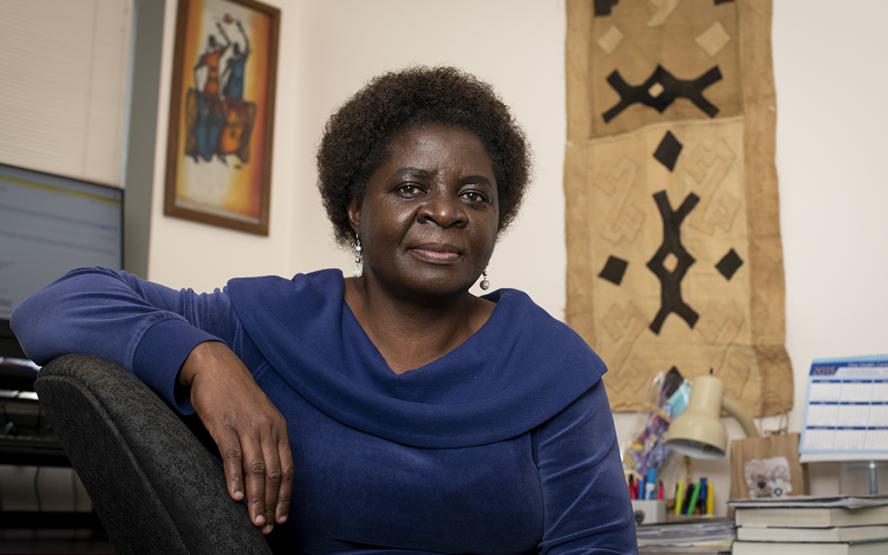-
About
- Leadership & Faculty
- News & Events
-
Academics
- Graduate
- Advanced Clinical Training
- Continuing Education
-
Student Life
-
Research
-
Hospitals & Clinics
- Emergency Care
- Hospital Services
-
Community Outreach
- Volunteer
Sex and Gender Differences Matter
Associate professor Janetrix Hellen Amuguni explains why it's important to learn how COVID-19 and stay-at-home orders are affecting men and women differently.

Like most of us, the faculty and researchers at Cummings School have watched the COVID-19 pandemic develop and spread with a mixture of concern and curiosity.
While none of them were surprised to see a new virus spill over from animals to people, they still have lots of questions about how it’s infecting and affecting people worldwide—and what it will take to bring the U.S. and international outbreak under control.
We asked experts to share what questions about COVID-19 they’d most like to be able to answer in the months ahead.
Associate professor Janetrix Hellen Amuguni is the project lead for SheVax+, a research initiative funded by International Development Research Centre’s Livestock Vaccine Innovation Fund that is generating evidence and formulating strategies to help position women in Rwanda, Uganda, and Kenya to effectively and efficiently contribute to and benefit from livestock vaccines. She’s also the senior faculty advisor for the Tufts-UGHE-UR One Health Collaborative.
“I want to know what is causing the gender difference in the COVID-19 deaths,” said Amuguni, who is leading a team of investigators that has received COVID-19 Rapid Response Seed Funding from Tufts University and Tufts Medical Center to investigate sex differences and gender disparities in COVID-19 disease. “It is being reported across China, Italy, Spain, Iran, and Germany that the number of men testing positive and dying from COVID-19 is double that of women, said Amuguni. “In Italy, men have accounted for 71% of the deaths. There’s speculation that lifestyles of men might predispose them to develop COVID-19. For example, in China men are more likely to be smokers than women and so have more-compromised lungs.
However, this question requires an extensive analysis from both a gender and sex perspective. It might be that the men’s immune systems are built in a different way from women’s. Or it could be that gender roles linked to behaviors of men and women—access and control over resources and opportunities, power dynamics, and cultural norms that determine what women or women do daily—are playing an underlying role in determining who contracts this infection.
In line with this, there are also gender-related consequences as a result of confinement related to stay-at-home advisories and orders, and these would differ across the world. We need to consider simple questions, such as has the workload increased for men or women? What does this mean for decision making, access, control over resources, and power dynamics? And if there an increase in domestic violence, who is affected the most?
Gender roles, distribution of labor, and resources have played an important role in the spread of other zoonotic diseases such as tuberculosis and brucellosis, and Ebola, as well as in their control and prevention. Gender and social-cultural norms affect the health-seeking behavior of people in different societies and intersect with other global-health inequities such as socio-economic status, race, and age. Therefore, gender issues need to be addressed to understand better the risks for COVID-19—and to develop adequate prevention and control strategies.”
Read more responses in our “Special Report: Answers Needed About COVID-19” series from Amanda Martinot, Felicia Nutter, Marieke Rosenbaum, Jonathan Runstadler, Abhineet Sheoran, Charles Shoemaker, Sam Telford, Saul Tzipori, and Chris Whittier.
Department:
Dept. of Infectious Disease and Global Health